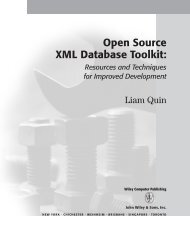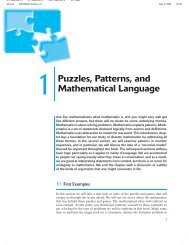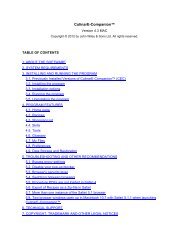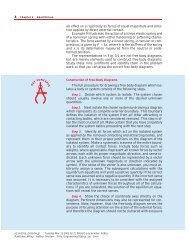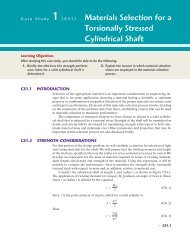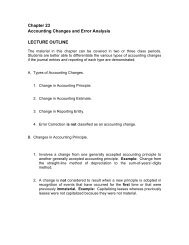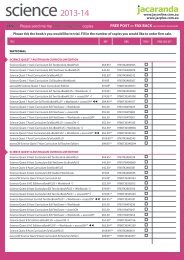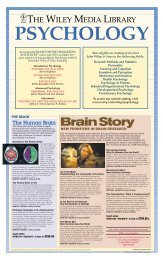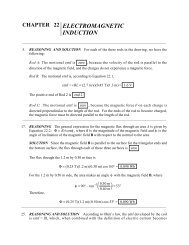Chapter Two - Wiley
Chapter Two - Wiley
Chapter Two - Wiley
You also want an ePaper? Increase the reach of your titles
YUMPU automatically turns print PDFs into web optimized ePapers that Google loves.
8956d_ch02_066 8/20/03 12:55 PM Page 66 mac76 mac76:385_reb:<br />
66 CHAPTER 2 A Further Look at Financial Statements<br />
From 2000 to 2001, Best Buy’s earnings per share increased. Its priceearnings<br />
ratio decreased. This decrease might reflect a belief that Best Buy’s<br />
profitability and growth will not continue.<br />
As noted, earnings per share cannot be meaningfully compared across companies.<br />
Price-earnings ratios, however, can be compared. Illustration 2-14 lists<br />
five companies and their earnings per share and price-earnings ratios for 2001<br />
(calculated at the end of each company’s fiscal year). Note the difference in priceearnings<br />
ratios between Sears and Intel.<br />
Illustration 2-14<br />
Variability of earnings<br />
performance ratios among<br />
companies<br />
Company Earnings Per Share Price-Earnings Ratio<br />
Intel $0.19 169.7<br />
Microsoft 1.45 47.8<br />
General Motors 1.79 27.5<br />
Kellogg 1.19 25.4<br />
Sears, Roebuck 2.25 21.3<br />
Business Insight<br />
INTERNATIONAL PERSPECTIVE<br />
The French know a lot about food and wine—but stocks are another matter. One<br />
observer went so far as to state, “Indeed, until recently the French widely derided<br />
people who invested in stocks as Anglo-Saxon speculators, greedy capitalists who<br />
deviously manipulated financial markets to line their pockets.” But when stock<br />
markets (or as the French say, les Bourses) around the world hit record highs,<br />
many French began taking classes to learn more about how to invest. Many have<br />
a lot to learn. For example, Jacques Giraudou decided to take a class after he sustained<br />
a huge investment loss. He had purchased an investment in the Eurotunnel,<br />
which proceeded to lose 70% of its value over a two-year period. Only after<br />
two years did he realize that he had purchased stocks rather than bonds.<br />
SOURCE: Suzanne McGee, “The French Try to Demystify Investing,” Wall Street Journal<br />
(May 27, 1999), p. C1.<br />
DECISION TOOLKIT<br />
Decision Info Needed Tool to Use for Decision How to Evaluate<br />
Checkpoints for Decision Results<br />
How does the company’s<br />
earnings performance<br />
compare with that of<br />
previous years?<br />
Net income available to<br />
common shareholders<br />
and average common<br />
shares outstanding<br />
Earnings Net income Preferred stock dividends<br />
<br />
per share Average common shares outstanding<br />
A higher measure suggests<br />
improved performance,<br />
although the<br />
number is subject to<br />
manipulation. Values<br />
should not be compared<br />
across companies.<br />
How does the market<br />
perceive the company’s<br />
prospects for future<br />
earnings?<br />
Earnings per share and<br />
market price per share<br />
Price-earnings<br />
ratio<br />
<br />
Stock price per share<br />
<br />
Earnings per share<br />
A high ratio suggests the<br />
market has favorable expectations,<br />
although it<br />
also may suggest stock<br />
is overpriced.



